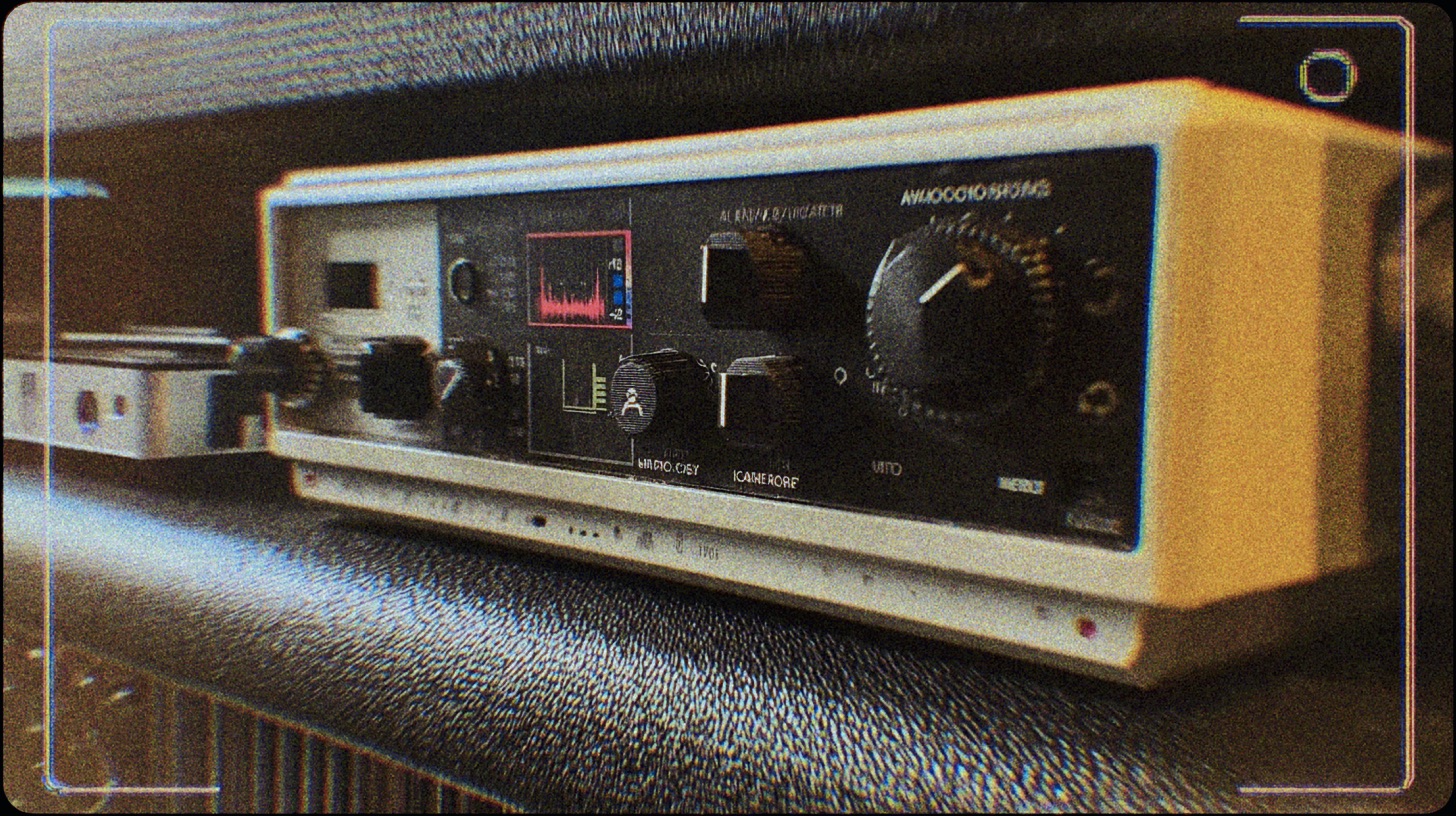
# Mixing Of Mice & Men’s Crushing Guitar Tones w/ Aaron Pauley
Nail The Mix Staff
Of Mice & Men’s guitar tones are an absolute force. They’re thick, aggressive, and perfectly sculpted to hit you right in the chest while still leaving space for every other element in a dense metal mix. How do they get that sound?
When we sat down with vocalist and producer Aaron Pauley to watch him mix the track “Mosaic,” we discovered his approach is refreshingly straightforward. Forget a dozen plugins on every channel; Aaron builds these crushing tones with a few powerful moves using tools you probably already own. Let’s break down his simple, effective process for mixing both rhythm and lead guitars.
The Rhythm Guitar Foundation: Taming and Shaping
For the heavy, chugging rhythm guitars, Aaron’s main chain is simple: a bit of surgical EQ followed by a classic compressor. He’s not looking to reinvent the wheel, just to enhance what’s already there.
The Go-To Compressor: The 1176
The first move is to add some glue and control with an 1176-style compressor. While he uses the UAD version, Aaron gives a shout-out to the Native Instruments VC 76 and other emulations, noting that many of them are very usable.
The key here isn’t to smash the signal. He uses the 1176 for its subtle color and the pleasing harmonic distortion it adds.
Actionable Settings:
- Attack: Set to a medium position (“mid”).
- Release: Also set to a medium position (“mid”).
- Goal: Aim for just a tiny bit of gain reduction—around half a dB to 1 dB—tickling the needle only on the loudest transients.
This approach gracefully shaves off the harshest peaks without sacrificing the punch, adding character while keeping the dynamics in check. This is a perfect example of how subtle compression can make a huge impact.
Carving Space with Smart EQ
With the dynamics handled, Aaron turns to EQ to make the guitars sit perfectly in the mix.
Managing the Lows (Without Killing Them)
You might hear some unwanted rumble or mud in a heavy guitar tone, especially on bass-heavy headphones. The common instinct is to slap on a steep high-pass filter and cut everything below 100Hz. Aaron takes a more nuanced approach.
Instead of a hard cut, he uses a low shelf, pulling down about -3 dB around 120 Hz.
Why? Because even inaudible sub-bass frequencies will affect every compressor they hit down the line on your mix bus. Gutting the lows entirely can make your bus compressors react unnaturally. By gently shelving the low-end, he cleans up the mud without creating problems for the rest of his mix. It’s a pro move that preserves the weight of the guitar while retaining a natural feel.
Sweeping for Presence
On the other end of the spectrum, Aaron will often use a high shelf to gently roll off the very top end. This isn’t about making the guitars sound dark; it’s about strategically carving out a little space for vocals and cymbals to have their own sense of air and presence. He’ll sweep the frequency back and forth to find the sweet spot where the guitar still has bite but isn’t fighting other elements.
A Smarter Workflow: Print Your Tones and Move On
One of the most valuable insights from Aaron has less to do with plugins and more to do with mindset. He notes that the guitar tones were created with STL Tones Tone Hub before the mix stage. For the mix, he uses these pre-amped, printed audio files.
He deliberately avoids using the raw DI tracks during the mix. Why? To avoid the temptation of falling down the “rabbit hole” of endlessly tweaking amp sims, trying to find a tone that’s just 1% better. By committing to a great-sounding printed tone, he ensures the mix is always moving forward. It’s a fantastic lesson in making confident decisions and moving on.
Making Leads Audible Without Making Them Loud
When it comes to the atmospheric stereo lead guitar, Aaron’s process is even simpler. His goal is to make it audible and clean it up tonally, using fader level and EQ before even thinking about compression.
EQ for Clarity
To help the lead cut through, he uses a few basic EQ moves:
- Cut the Mud: First, he carves out any unnecessary low-end frequencies that are clouding the lead’s clarity.
- Boost for Presence: He then adds a boost in the 2 kHz to 2.5 kHz range to help the lead’s melody sing without being harsh.
- Level with EQ Gain: He uses the EQ plugin’s output gain to bring the track to the right level in the mix.
The ‘Mute-to-Listen’ Technique
Here’s a brilliant trick for setting the level of atmospheric or ambient parts. Our brains often tell us we need to hear an element more, causing us to push the fader up until it’s way too loud.
Aaron’s solution is to listen by removing the track. He’ll mute the lead part, get a feel for how the mix sounds without it, and then unmute it. When the lead pops back in, his brain gets a clear frame of reference for how much it’s actually contributing. This simple A/B test prevents him from overpowering the mix with an element that’s supposed to add texture, not dominate.
See How It All Comes Together
These techniques show how a few smart, simple decisions can lead to a powerful, professional-sounding metal mix. Aaron Pauley’s approach is all about intentionality—knowing what tool to use, why you’re using it, and when to stop.
But seeing the concepts is one thing. Watching a pro like Aaron apply them in real-time to a full mix is another. At Nail The Mix, you can do exactly that.
Of Mice & Men on Nail The Mix
Aaron Pauley mixes "Mosaic"
Get the Session
When you subscribe, you get to download the actual multitracks from Of Mice & Men’s “Mosaic” and watch Aaron Pauley mix the entire song from scratch, explaining every single move along the way. If you want to see exactly how he glues these guitars to the bass, drums, and vocals, this is your chance.
Get a new set of multi-tracks every month from a world-class artist, a livestream with the producer who mixed it, 100+ tutorials, our exclusive plugins and more
Get Started for $1






